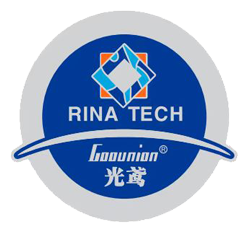Designing with Ultra-thin LED Backlights: Tips and Best Practices
In today’s world, LED backlights are becoming increasingly popular due to their energy efficiency and long lifespan. Among them, ultra-thin LED backlights are gaining more attention as they offer a sleek and modern design for various applications, including automotive interiors, mobile devices, and navigation systems. In this blog post, we will discuss some tips and best practices for designing with ultra-thin LED backlights.
Before we dive into the details, let’s take a look at the cost advantages of using ultra-thin LED backlights produced by Shenzhen RINA TECH Company. They specialize in custom acrylic lighting sheets, LCD backlight panels, and light brightness enhance films, which are widely used in automotive interiors, mobile devices, and navigation systems. The cost advantage of using these products lies in their high efficiency and low power consumption, which can significantly reduce the overall cost of the product. Additionally, RINA TECH Company has a strong presence in the Middle East region, including Saudi Arabia, United Arab Emirates, and Qatar. This allows them to offer competitive pricing and quick delivery times to customers in these countries.
Now let’s move on to the tips and best practices for designing with ultra-thin LED backlights:
- Consider the Application
The first step in designing with ultra-thin LED backlights is to consider the application. Different applications require different levels of brightness, color temperature, and color rendering index (CRI). For example, automotive interiors require a warm white light with high CRI to enhance the appearance of the interior, while mobile devices require a cool white light with low CRI to reduce eye strain.
- Choose the Right LED Backlight
Once you have determined the application requirements, it’s time to choose the right LED backlight. Ultra-thin LED backlights come in different sizes, shapes, and colors. It’s important to choose the right size and shape that fits your application. Additionally, you should consider the color temperature and CRI of the LED backlight to ensure it meets your application requirements.
- Optimize the Optical Design
Optimizing the optical design is critical in achieving the desired lighting effect. The optical design includes the reflector, diffuser, and lens. The reflector is used to redirect light to the desired location, while the diffuser is used to evenly distribute light. The lens is used to control the beam angle and shape. Optimizing these components can significantly improve the lighting effect and reduce glare.
- Consider Thermal Management
Ultra-thin LED backlights generate heat during operation, which can affect their lifespan and performance. Therefore, it’s important to consider thermal management when designing with ultra-thin LED backlights. This includes using heat sinks, thermal pads, and proper ventilation to dissipate heat.
- Test and Validate
Finally, it’s important to test and validate your design before mass production. This includes testing the brightness, color temperature, CRI, and uniformity of the LED backlight. Additionally, you should validate the thermal performance of your design to ensure it meets your application requirements.
In conclusion, designing with ultra-thin LED backlights requires careful consideration of the application requirements, choosing the right LED backlight, optimizing the optical design, considering thermal management, and testing and validating your design. By following these tips and best practices, you can achieve a sleek and modern design while meeting your application requirements. As for the future development of ultra-thin LED backlights, we can expect to see more innovative designs that offer even higher efficiency and lower power consumption in the next 15 years.
More about Ultra-thin LED Backlights etc. products apply cases video, welcome to visit: RINA TECH Youtube Channel, thank you.
